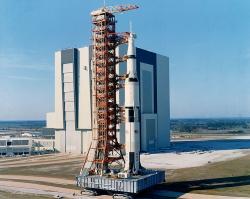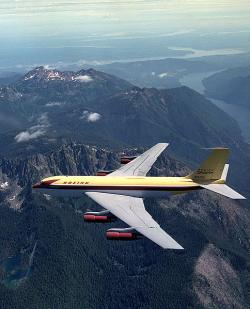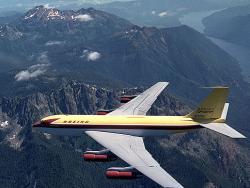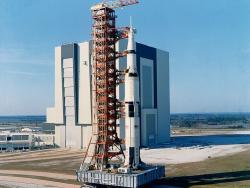The largest rocket built at the time of the historic first missions to the moon, the Saturn V carried aloft the 45-ton Apollo spacecraft on earth orbital and lunar missions from 1967 to 1972. It also launched the 120-ton Skylab into earth orbit on May 14, 1973.
Boeing

YearAdded:
Image Credit:
Public Domain (NASA)
Image Caption:
The largest rocket engines built at the time of the first US missions to the moon.
Era_date_from:
1967
1980

The 367-80 is the prototype for most jet transports. Its success was due largely to its mechanical systems, including turbine engines with thrust reversers and noise suppressors, redundant hydraulic control systems, and an improved cabin-pressurization system. Honeycomb flap panels were introduced, along with a strong, lightweight structural design that controlled fatigue cracking. These led to several innovations in aircraft tooling and manufacturing techniques.
The Dash-80 was the first commercial airliner economical enough to take the US airline industry off subsidy.
YearAdded:
Image Credit:
Courtesy Wikipedia/Boeing Dreamscape (CC BY 2.0)
Image Caption:
Prototype of the Boeing 707 and most jet transport systems, the Boeing 367-80 established economic feasibility of commercial air travel.
Era_date_from:
1954
1994
Innovations

The 367-80 is the prototype for most jet transports. Its success was due largely to its mechanical systems, including turbine engines with thrust reversers and noise suppressors, redundant hydraulic control systems, and an improved cabin-pressurization system. Honeycomb flap panels were introduced… Read More

The largest rocket built at the time of the historic first missions to the moon, the Saturn V carried aloft the 45-ton Apollo spacecraft on earth orbital and lunar missions from 1967 to 1972. It also launched the 120-ton Skylab into earth orbit on May 14, 1973.
Design and…


